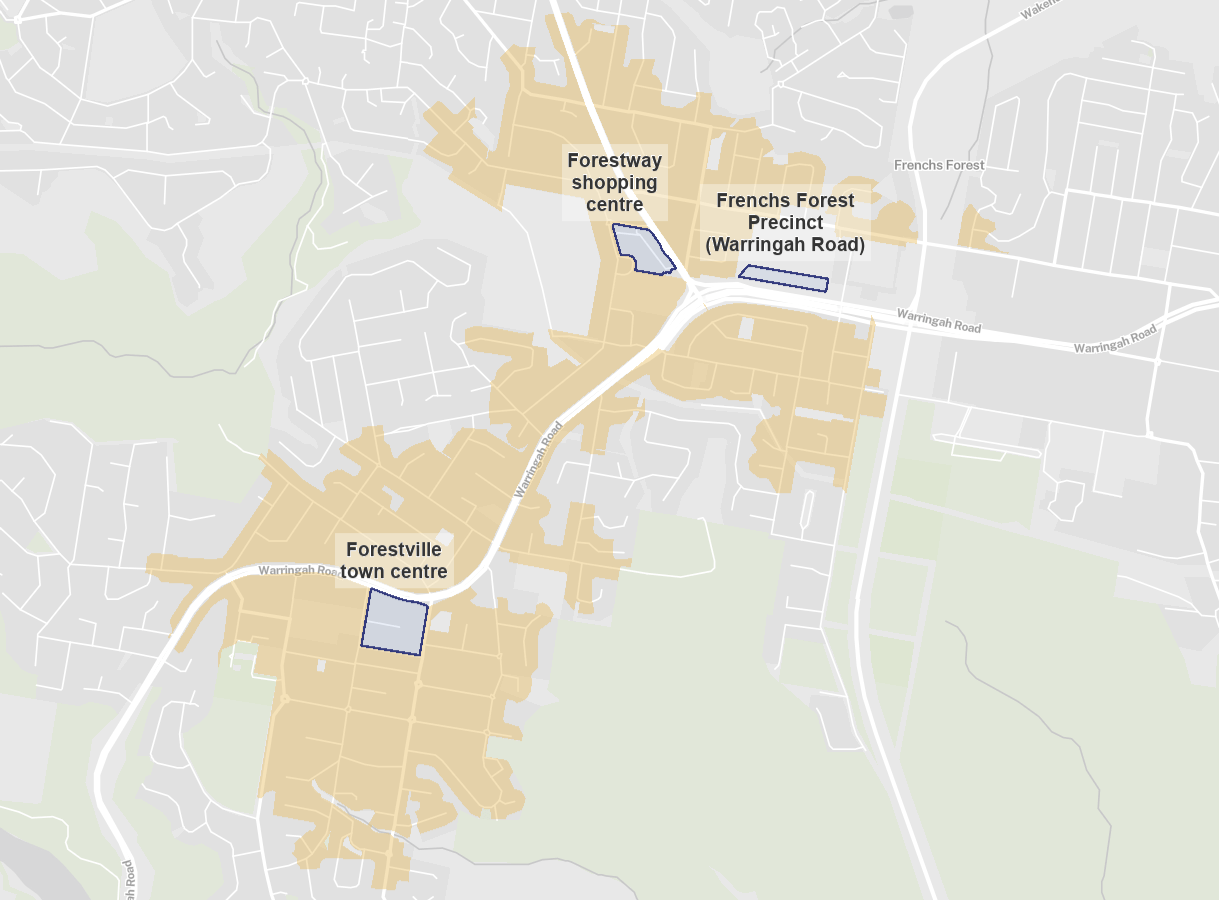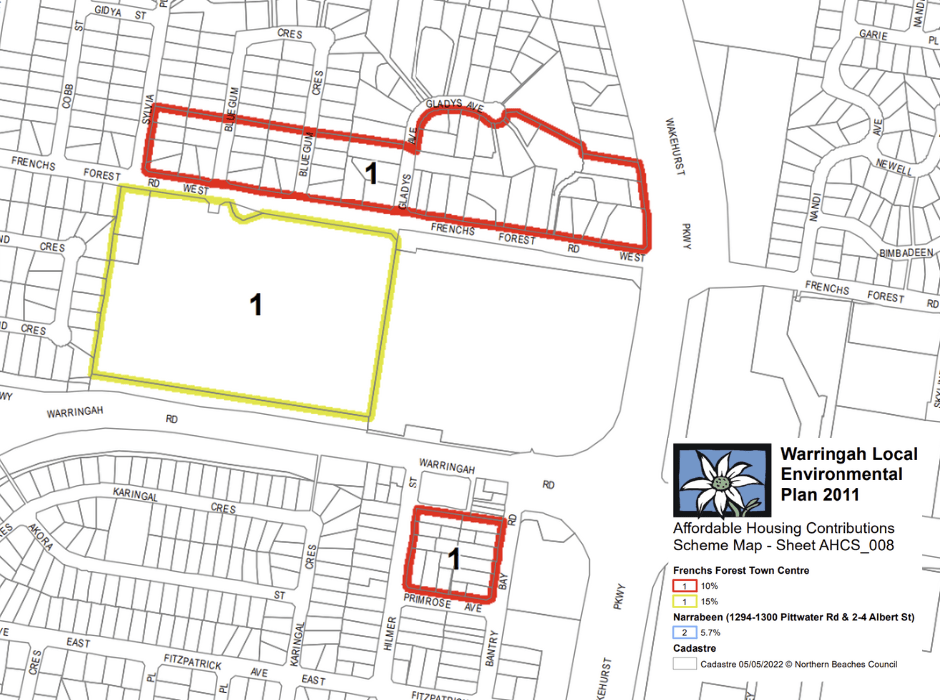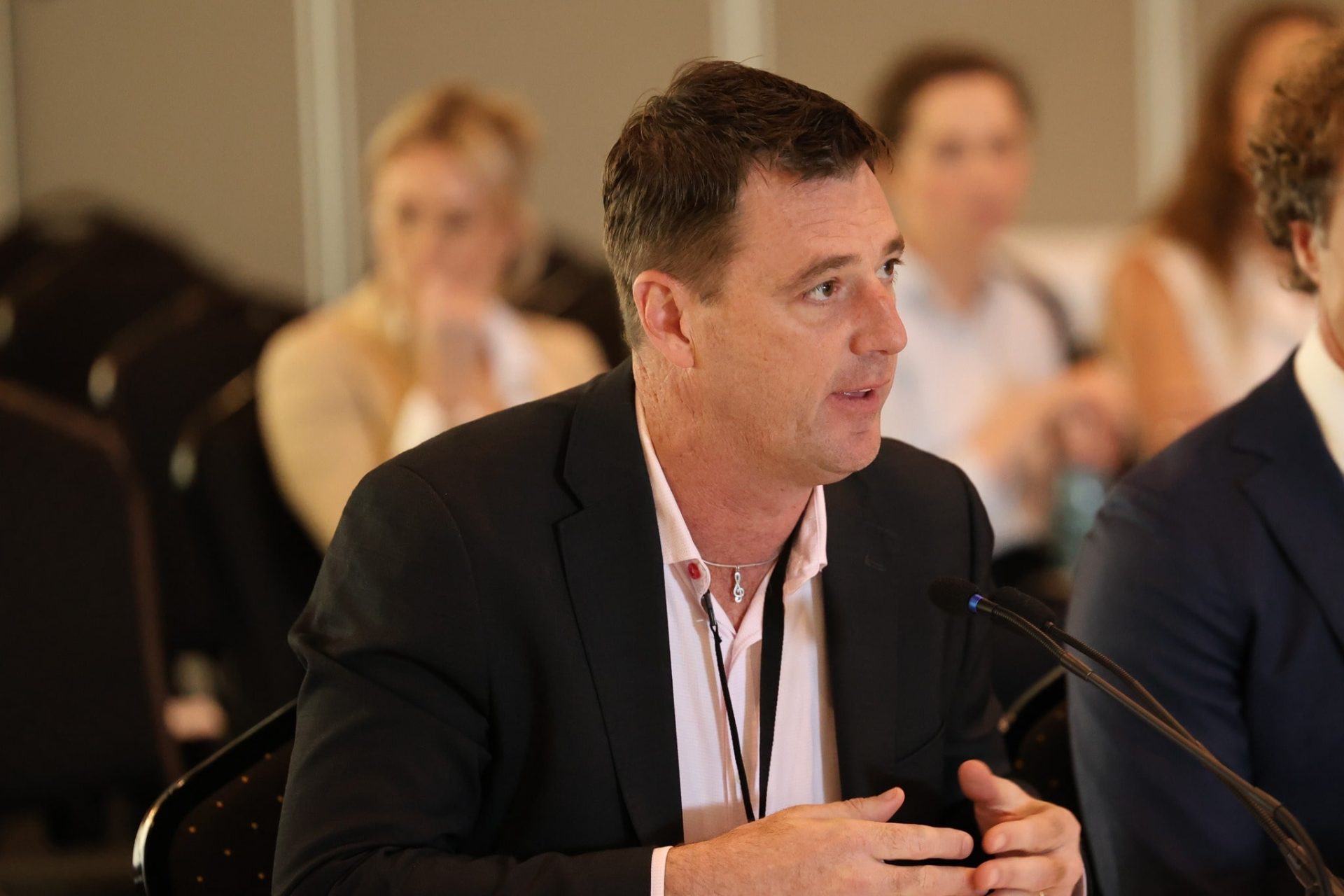Frenchs Forest residents say they’re stuck in real estate limbo with homes that are falling apart, while developers and Northern Beaches Council face off over Council’s Affordable Housing Contribution Scheme.
Four years after the Frenchs Forest 2041 Place Strategy was adopted, the suburb, identified as a key location for housing growth, has seen little residential building works despite DA approval for 239 apartments (with 41 dedicated to affordable housing and approximately $1.7 million in cash contributions to be used for affordable housing) across four DAs. The problem? Developers say Council’s Affordable Housing Contribution Scheme for Frenchs Forest is not feasible.
“We’ve been in limbo for over four years,” Amanda and David told us. They live in Frenchs Forest on a 2,760sqm block, which they’ve been told could support 60 apartments.
“We can’t put any capital into repairs or upgrades as the house and pool will be demolished. We’ve been approached multiple times by developers but once they do their sums, they all say the same thing: ‘Great block, love Frenchs Forest, but the affordable housing contribution is too high.’ And off they go to another suburb, which has minimal or no contributions.”
The Frenchs Forest 2041 Place Strategy, which sits within the Hospital Precinct Structure Plan, is a 20-year plan to build 2,000 homes (1,000 in the town centre, and 1,000 in the adjacent residential area, including terraces, medium-scale apartments and higher-density apartments) and create 2,000 jobs.

Under Council’s Affordable Housing Contribution Scheme there is a mandatory 15 per cent affordable housing contribution in the town centre and 10 per cent in surrounding areas to be made by developers. The contribution can be made as dwellings (e.g. apartments) or an equivalent monetary contribution. The aim is to create 250 affordable homes, ideally for Northern Beaches essential workers, although there is no framework giving them priority over others on the social and affordable housing waitlists.
“Northern Beaches’ problem with housing our essential workers isn’t going away; it’s only getting worse,” said Michael Regan, Member for Wakehurst, who was heavily involved in the Affordable Housing Contribution Scheme.
“There are 8,500 on the waiting list for social and affordable housing. At the time of developing the Frenchs Forest Strategy, we worked with independent economic modelling, which developers reviewed, to understand what was feasible in terms of an affordable housing contribution.
“At the end of the day, we need accommodation for our essential workers like bus drivers, nurses, police, teachers, etc. We’ve already seen the effects of what happens when we can’t find bus drivers to drive our buses.”
However, developers like Marco Novati from Novati Constructions, explained that in 2021, when the Strategy was developed with the Affordable Housing Contribution Scheme, interest rates were at one per cent and building costs were $4,000 per sqm.
“Today, interest rates are five per cent and building costs have doubled, and they are only increasing,” he said.

Frustrated residents, developers and real estate agents have called for a reduction in the contribution percentage, which they say is the second highest in the state. And Council is listening.
In June 2024, the Council resolved to investigate a new, fixed-rate fee that developers would pay toward affordable housing for developments that don’t need a rezoning proposal.
This feasibility analysis has started, and they’ve expanded it to include the nine town centres under the LMR housing policy, as well as Frenchs Forest’s Precinct with the 10 per cent contribution.
“Affordable housing is fundamental to the wellbeing and vibrancy of our Northern Beaches community and Council needs to ensure that as our area grows and evolves, teachers, nurses, emergency workers and other key members of our community have the opportunity to live close to where they work and contribute,” Northern Beaches Mayor Sue Heins told us.
“Council continues to work with developers to find the balance between them being able to make a profit while still investing in affordable housing, so that together we foster a more inclusive, diverse, and resilient community — one where local families and essential workers can continue to thrive and help shape the future of the Northern Beaches.”
Council staff expect to present their recommendations to Council later this year.
Hold on… didn’t the State release a policy about low to mid rise housing that includes affordable housing too?
Earlier this year, the NSW Government released the Low to Mid Rise Housing policy which sees taller buildings in identified town centres – Frenchs Forest is one of them (you can read it in detail here).

But for this article, we’ll focus on the affordable housing component of that policy.
Should a developer want to develop an eight-storey residential apartment building, but is only allowed six, they can opt in for the in-fill affordable housing scheme. This provides a 20 to 30 per cent bonus building height and floor space ratio for 10 to 15 per cent of the gross floor area to be used as affordable housing for 15 years.
While developers can opt in to the State’s scheme (to get the height increase), the Council’s one is mandatory.
“The NSW Government’s infill affordable housing reforms operates in a different but complementary way to the requirements for affordable housing in perpetuity under the Local Environmental Plan,” a spokesperson for the Department of Planning, Housing and Infrastructure told us.
“The scheme is designed to provide a rolling stock of affordable housing.”
While Council’s Affordable Housing Contribution Scheme is in perpetuity (i.e. forever), the State’s in-fill affordable housing scheme is only for 15 years. Another point of difference is Council will own the apartments (if given as dwellings instead of cash) while the developers will still own the State’s designated affordable dwellings. Both Council and State’s dwellings would be managed by a community housing provider.

What it means is that 15 years after construction has been completed, developers could sell the State’s affordable apartments and make their profit then. While developers see this as an upside compared to the Council’s scheme, Mr Regan disagrees.
“The way the bank sees it is the Council’s properties are worthless as we hand them over to the Council, while the State’s properties have some value, not as much as an apartment we will sell, but something, and that goes towards our profitability and whether we can access a loan from the bank for the development,” Mr Novati said.
He explained it wasn’t about developers being greedy but about demonstrating to the banks that their projects are feasible. He said developers need to show a 20 per cent profit margin.
“The problem with the State’s scheme is it isn’t in perpetuity,” Mr Regan countered.
“By having the affordable housing have a 15-year time limit, we are just moving the problem into the future, but it will still be a problem, probably an even bigger problem because house prices will be even more expensive and where will those people, who have been accessing affordable housing, go?”

As we said before, while the State’s scheme is optional, Council’s is mandatory, but many developers take up both, hoping the additional height can help make up the numbers.
“The issue you then have is you have 25 per cent of the building dedicated to affordable housing,” Mr Novati said.
“And I, and many developers I’ve spoken to, have no issue with affordable housing, but that will have a negative effect on the apartment prices in the building because of how people perceive affordable housing, which will affect our profit. I know affordable housing is being sold as housing for essential workers, but there are no specifications that it must go to an essential worker.”
We checked this, and it’s true. Essential workers are not offered any priority status to access affordable housing. In addition, there is no required apartment composition to allocate as affordable housing. For example, a developer can give only one-bedroom apartments as affordable housing even when essential workers most likely have families.
“When the old Frenchs Forest High School site becomes available for development, I hope this will be an opportunity to discuss a new model to attract essential workers,” Mr Regan added.
No one wants these properties to be built more than the residents
“Frenchs Forest was said to be a major precinct, leading the way for development and affordable housing and now it’s become a dilapidated suburb,” Craig, a Frenchs Forest resident, told us.
“Someone needs to be held accountable for what’s happening to Frenchs Forest and make these properties movable.”

Residents expressed to Manly Observer how the stress of the situation is keeping them up at night.
“Why is Frenchs Forest doing all the heavy lifting in the LGA?” Amanda asked.
She pointed out that Brookvale requires a five percent Affordable Housing Contribution, but Dee Why has none.
She said if Council were to reduce French Forest’s percentage, then at least they would get some affordable housing, while now they’re getting none.
There is also a suspicion within the community that the affordable housing dwellings given to Council will become its assets, and what’s stopping it from selling them off in the future. However, Council assured us that the properties have to be allocated as affordable housing in perpetuity, in line with the Scheme, and they will be developing relationships with NSW Homes and local community housing providers to manage the properties (once they get built).
“In the meantime, our land value increases, which increases our Council rates,” Craig added.
“The only buildings being constructed are boarding houses and senior housing complexes.”
The boarding house (which has 18 rooms) was determined in 2017 and preceded the Affordable Housing Contribution Scheme.
The DAs waiting on the sidelines
At the time of publication, there are four residential building DAs approved by Council in Frenchs Forest for 239 apartments (with 41 dedicated to affordable housing).
Approved in November 2023, DA2023/0285 is at 1-5 Bluegum Crescent & 142 Frenchs Forest Road. It’s Mr Novati’s property, and at the time of approval, its estimated construction costs were at $22 million for two residential buildings of four and five stories. There would be a total of 44 apartments (seven x one-bedroom, 30 x two-bedroom and seven x three-bedroom). Seven apartments would be dedicated to Council’s Scheme.
Mr Novati said he would be amending the DA to take advantage of the LMR in-fill affordable housing scheme.
Approved in November 2024, DA2023/1821 is at 106 Frenchs Forest Road West and is expected to cost $18 million. Over six storeys, it will have 40 units (seven x one-bedroom, 21 x two-bedroom and 13 x three-bedroom). Four units have been allocated to Council’s Scheme with cash making up the remaining required contribution.

Approved in November 2024, DA2023/1751 is at 2-4 Gladys Avenue, and the projected construction costs are $12 million. The building is four-storeys with 28 apartments (seven x two-bedroom, 21 x three-bedroom) and they have opted for a monetary contribution to Council’s Scheme.

Approved this year, DA2024/0499 is at 11 Gladys Ave & 116-120 Frenchs Forest Road West. Its estimated construction cost is $70 million, and the plan is for 127 apartments (nine x one-bedroom, 85 x two-bedroom and 33 x three-bedroom). Nine apartments would be for Council’s Scheme while an additional 21 would be allocated to the State’s Scheme.

Read our earlier coverage on the LMR housing policy and affordable housing discussions:
No where to live: the fight to make space for our essential workers






